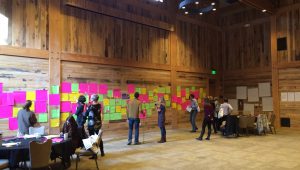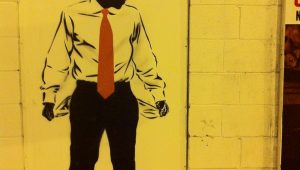There’ve been many great responses to today’s posts and there are so many smart people already looking and thinking about how we might rethink advocacy. I wanted to list a few of the resources/examples that folks have shared with me over the course of the day. Please continue to share with me… and with others outside the arts.
Createquity
Earlier this month, Createquity featured a post “A New Way to Think About Intrinsic vs. Instrumental Benefits of the Arts” in which they talk about a new report “Cultural Ecology, Neighborhood Vitality, and Social Wellbeing–A Philadelphia Project.”
They introduce a conceptual framework that is rooted in the “capability approach,” most closely associated with the economist Amartya Sen and the philosopher Martha Nussbaum. Rather than focusing on material resources, the capability approach assumes that wellbeing derives from people’s ability to make choices that allow them to lead a life that they have reason to value. … In adapting the capability approach to their examination of wellbeing in Philadelphia’s neighborhoods, Stern and Seifert draw on eight categories of wellbeing outlined in a 2009 report by Sen and fellow economist Joseph Stiglitz. These original categories, developed for comparisons between countries, were not always appropriate for a local context, and didn’t include an explicit category for arts and culture. Stern and Seifert’s modified version thus includes the following categories:
- Economic wellbeing
- Economic diversity
- School effectiveness
- Housing
- Social connection (including measures of culture)
- Insecurity
- Health
- Environment
- Political voice
Arts Ripple Effect
Arts Ripple Effect is a research piece the Topos Partnership did for the Fine Arts Fund in Cincinnati. In fact, they actually asked people what they think of when they hear the word “arts.” Below is interesting quote:
Underlying what people say are several assumptions that work against the objective of positioning the arts as a public good:
The arts are a private matter: Arts are about individual tastes, experiences and enrichment, and individual expression by artists.
The arts are a good to be purchased: Therefore, most assume that the arts should succeed or fail, as any product does in the marketplace, based on what people want to purchase.
People expect to be passive, not active: People expect to have a mostly passive, consumer relationship with the arts. The arts will be offered to them, and therefore do not need to be created or supported by them.
The arts are a low priority: Even when people value art, it is rarely high on their list of priorities.
Art Matters
ArtPride New Jersey, a coalition of arts organizations… in New Jersey, has a great website, Art Matters. It features folks outside the arts — from all different walks of life — talking about how the arts make a difference in their communities. The videos on Art Matters contain anecdotes from restaurant owners, mayors, city planners, county freeholders, and retail merchants among others.
There’s more content about the value of arts and the importance of hearing from those outside our circles lined up for tomorrow. Remember, you can follow along here or on Twitter (#NASadvocacy) and Facebook. Better yet, get involved. Share this (or any content) with folks outside of the arts.

